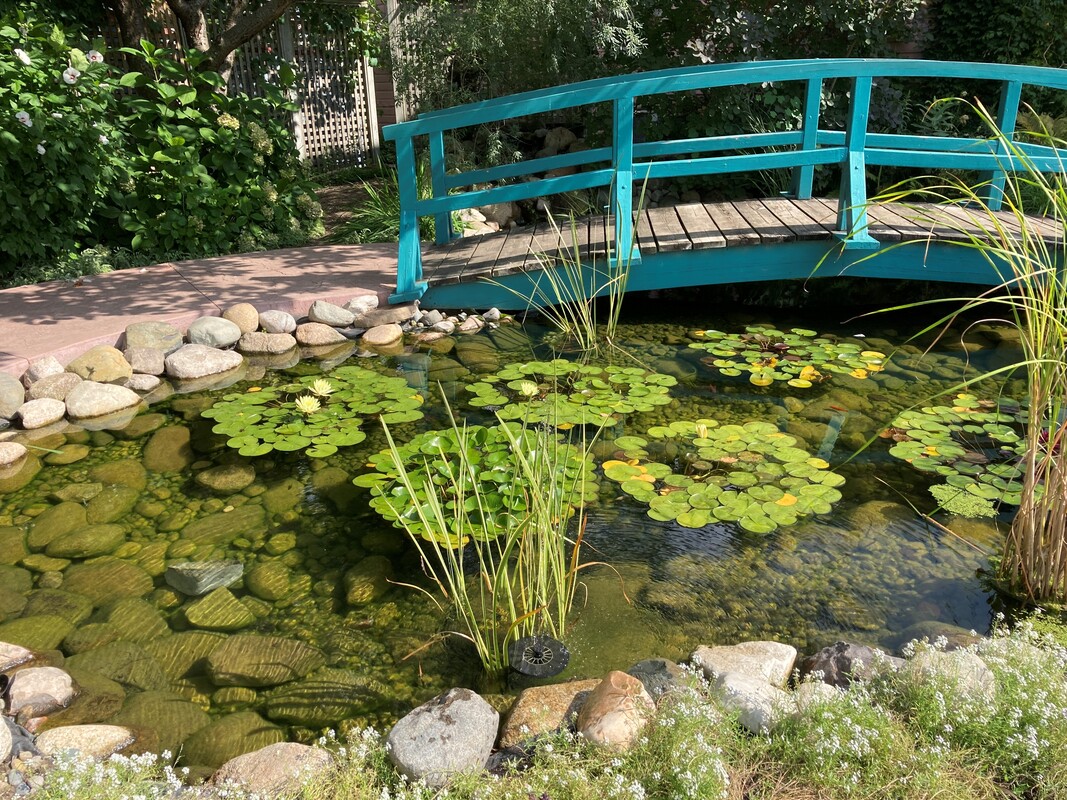|
Photo and article by Donna Iverson Surprisingly, the white water lily, like those found in Michigan, are native to North America. You can find them all over the state including the UP. They are most often found in local creeks, shallow ponds and wetland areas. The America water lilies pictured above bloom every summer in the Monet Garden in Muskegon, creating a vision of peace and tranquility during troubled times. A perennial, hardy water lily (Nymphaea odorata) can survive our winters if their roots are plants below the frost line. They need four to six hours of direct sun. Their white sweet-scented flower blooms are huge and last about four days, flowering from May through September. Once planted, water lilies last from fifteen to twenty years. Water lilies are good for the environment. They keep the water cool and prevent algae, actually oxygenating it. They provide shelter for fish from both birds and the sun. Beavers, ducks and deer feed on their leaves. The entire water lily is also safe for humans to eat, including the flowers, seeds, shoots, and rhizomes. It can be eaten raw or cooked with the bulb (rhizome) most nutritious, tasting to some like a sweet potato. The rhizome outer rind should be peeled before eaten. The water lily has also been used medicinally to treat diarrhea and inflammation. Always test a small piece for individual allergies. A close relative of the water lily is the American lotus (Nelumbo lutea). Like the water lily it is edible but invasive. Mostly found along the Mississippi River, the flowers of the lotus are yellow. The American lotus can easily be distinguished from our native water lily by the leaves. The water lily has a large notch while the edge of the lotus is smooth. For information on how to grow and care for water lilies, check out https://www.thespruce.com/the-incomparable-waterlily-and-lotus-1403525
0 Comments
Your comment will be posted after it is approved.
Leave a Reply. |
Archives
April 2024
Categories |

 RSS Feed
RSS Feed